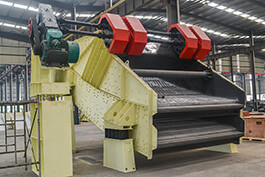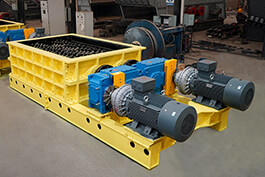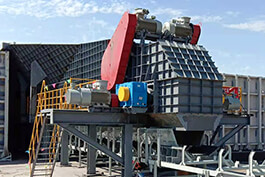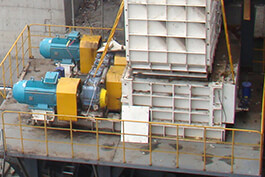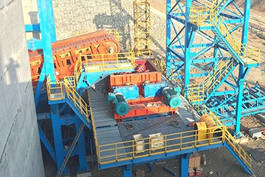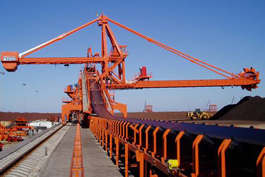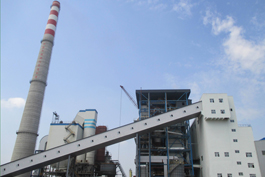1Banana screen how it works
The
banana screen is designed with the know-how of filling a manbanana-shaped multi-stage screen on a linear vibrating screen. The screen box moves in a straight line at a certain angle under the drive of a double unbalanced vibrator rotating in a synchronous direction. There is a large slope screen surface at the human material end, followed by a certain number of angles step by step down to the grain outlet, the slope screen surface at the human material end allows more materials to pass through the screen surface with higher screening speed and thinner material stratification. Because the bulk material passes through the steep slope faster, this early layering makes the fine particles closer to the screen surface more quickly, and can pass through the gap relatively unhindered, so the banana screen has a very high screening efficiency and 1.5 to 2 times higher than the traditional grading screen characteristics, is currently the most advanced and most popular screening machinery products.
.jpg)
2 Finite element software
At present, there are many popular finite element software. For different problems, the steps of finite element method are basically the same, usually pre-processing, processing and post-processing 3 stages. The pre-processing is to establish the finite element model: The processing completes the cell grid division; the post-processing is to collect the processing analysis results, so that users can easily extract information and understand the calculation results. 3sxj3661
banana screen mode analysis 3.1 establishment of finite element model the whole finite element model is composed of side plate, drive beam, strengthening beam, support beam and spring.
3.2 Processing of 3d model (1) grid division the whole model was divided into 21,100 units by using the function of grid free division. Each unit node has six degrees of freedom: Ux, r0tx, uy,roty, uz and rotz. (2) constraint processing only applies all constraints to the connection between the spring and the ground, that is, the 6 degrees of freedom at the lower end of the spring. (3) load handling sxj3661. Where f is the exciting force, cwa is the damping force, σma is the distributed inertia force, and k is the spring support reaction force. Considering that the banana screen operates in a far resonance state, and f and ∑ma are much larger than cwa, the damping force is omitted. The loads that should be considered in the analysis are: Gravity of the screen box: Gravity of the exciter: Exciting force: Spring support reaction force.
3.3Modal analysis and results
(1)
Banana screen inherent characteristic analysis modal analysis transforms the physical coordinates in the differential equations of vibration of a linear time-invariant system into modal coordinates, decoupling the equations and forming a set of independent equations described by modal coordinates and modal parameters in order to obtain the modal parameters of the system. The transformation matrix of the coordinate transformation is a modal matrix, each of which is listed as a modal mode. Natural frequency ω. It is derived from the structural characteristics of the product and determined by the interaction between multiple factors such as mass, mass distribution, center of mass position, stiffness and so on. Natural frequency w=vklm(1) in the formula k vibration body stiffness: M vibration body mass. It can be seen from equation (1) that the natural frequency of the system monotonically decreases with the increase of the system mass, and monotonically increases with the increase of the system stiffness.


.jpg)
